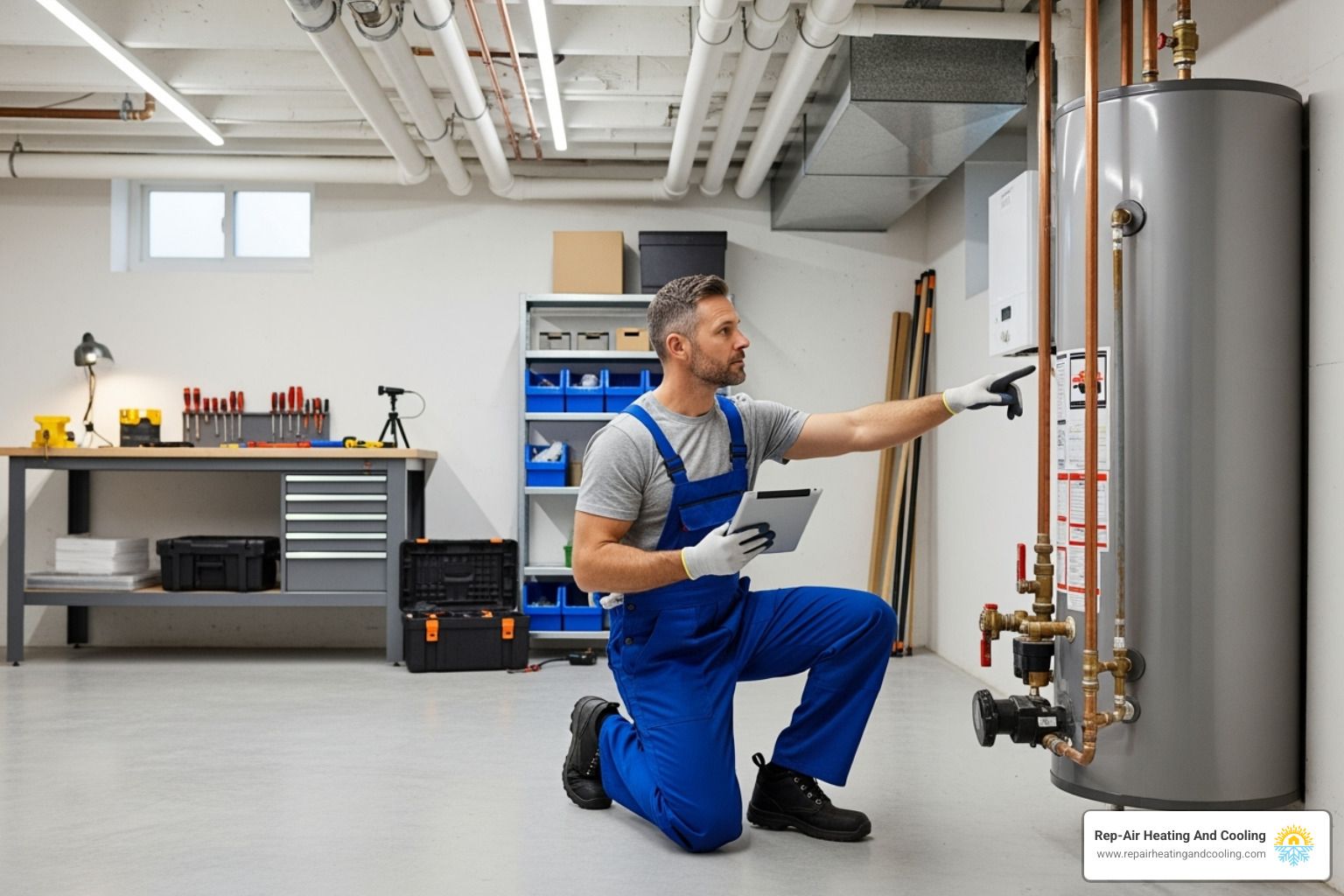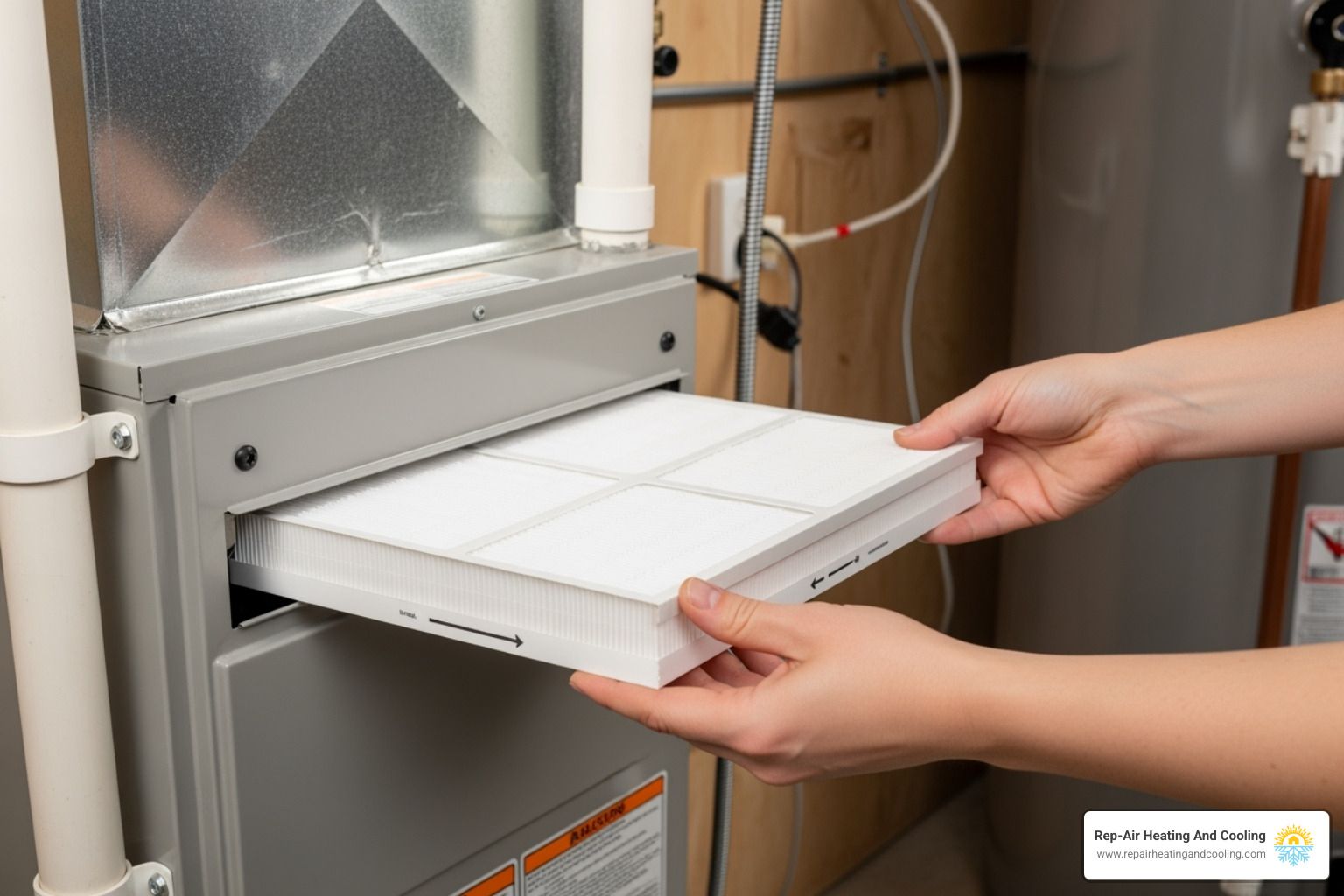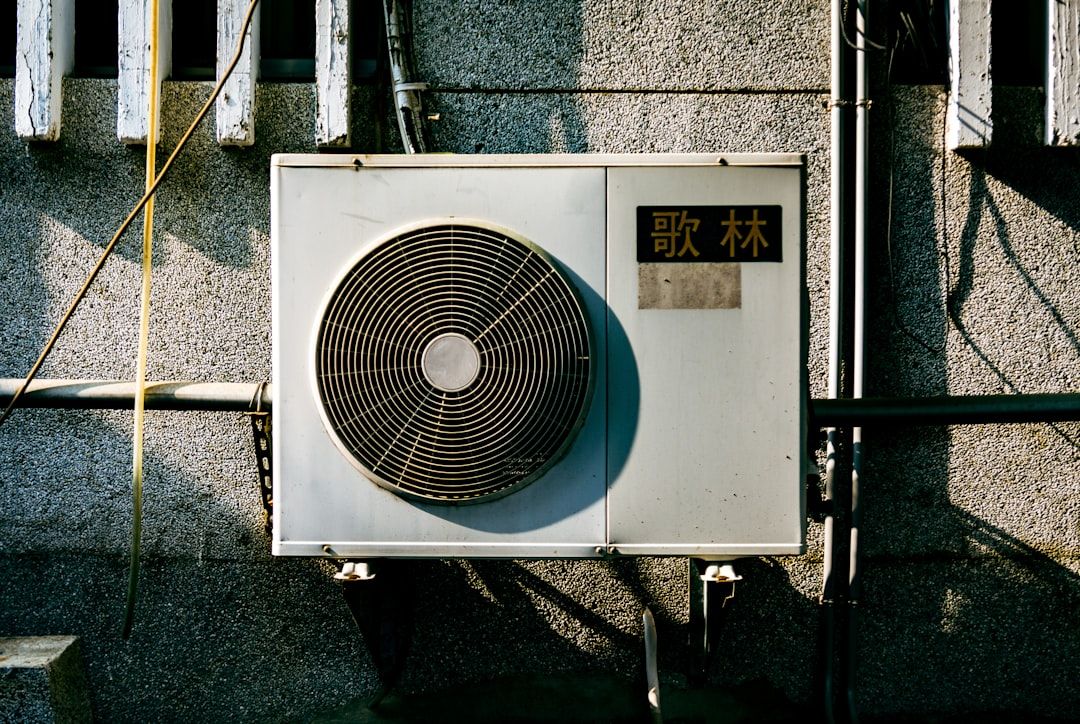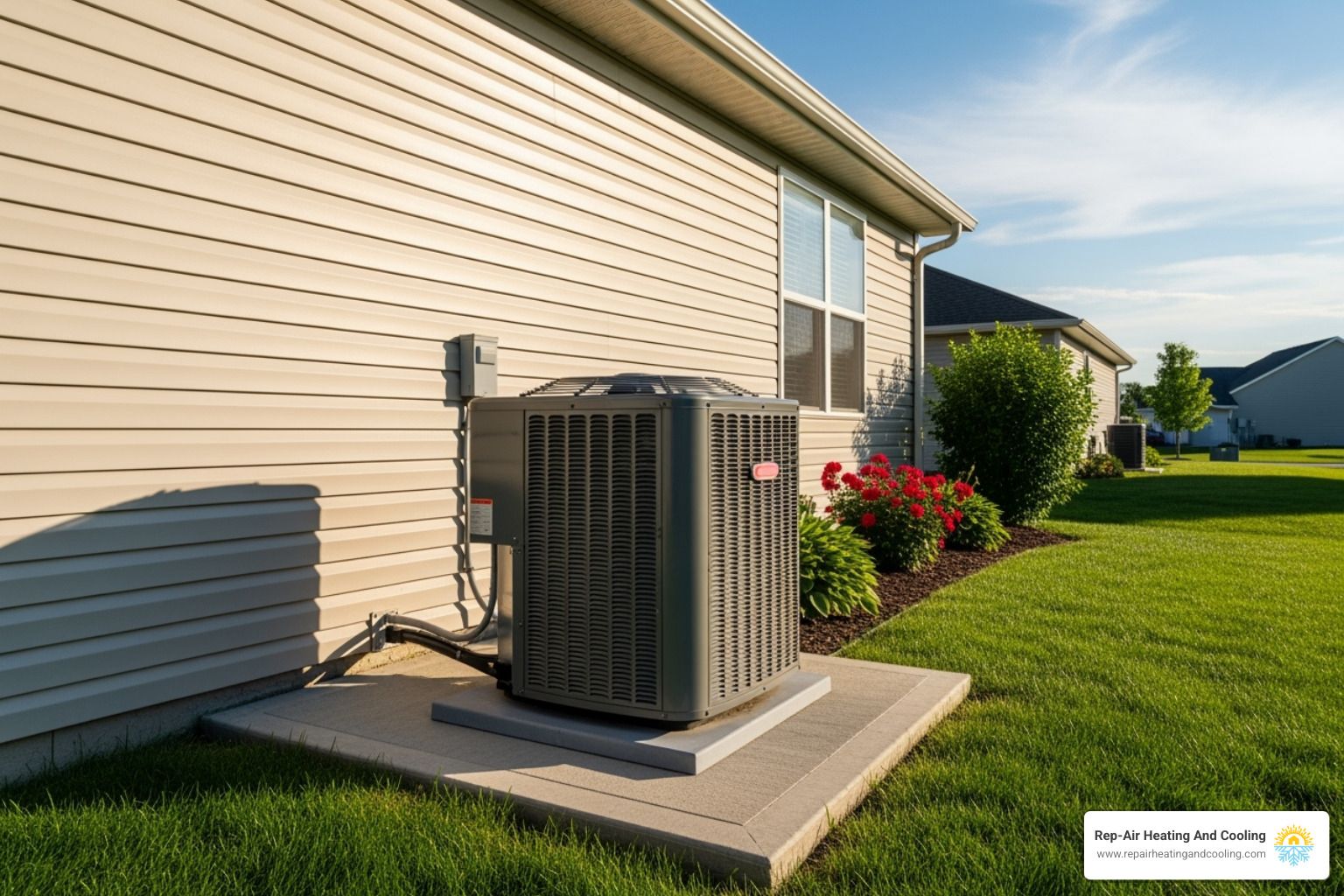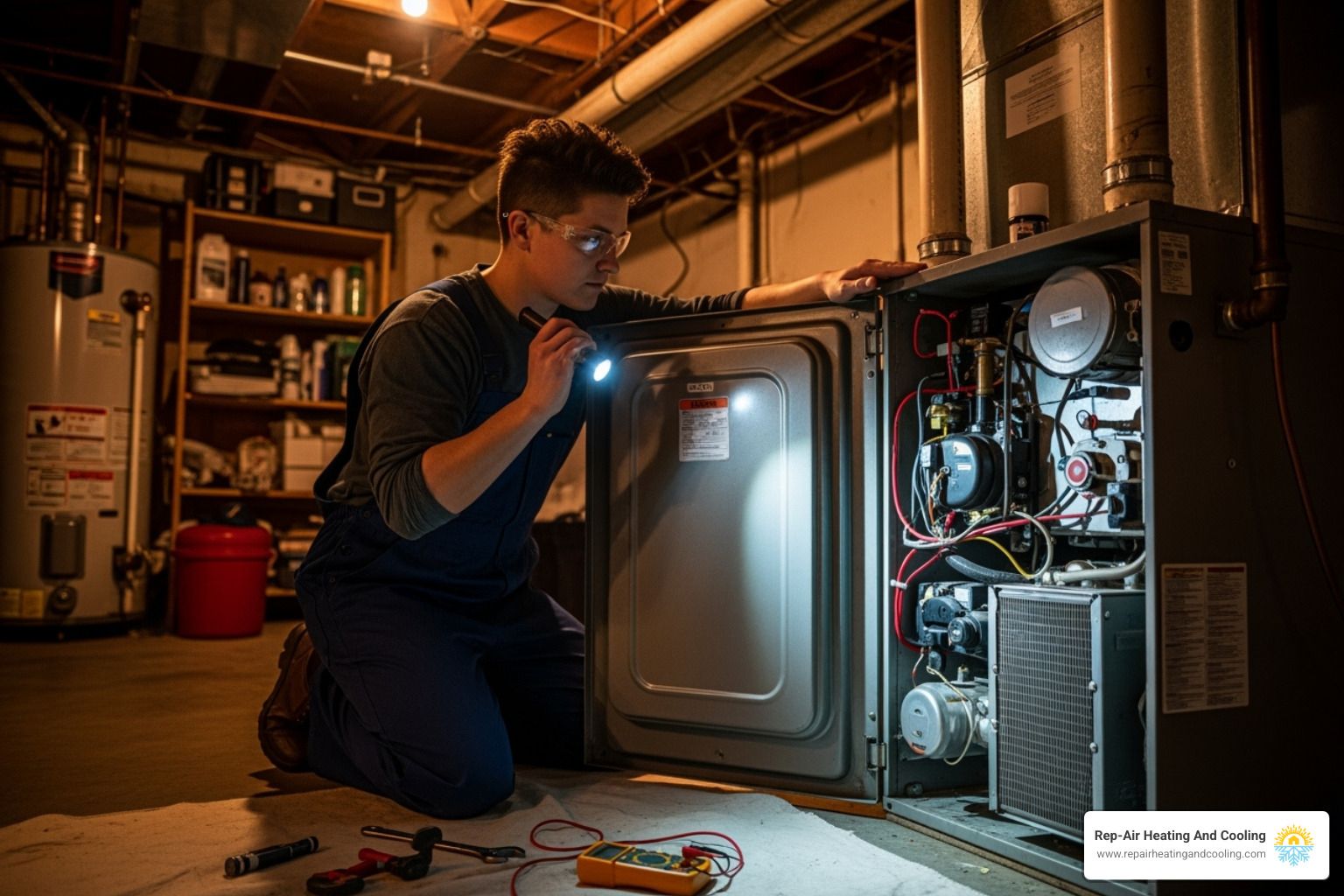Is Your Indoor AC Unit Acting Up? Here’s How to Fix It
IMPORTANT NOTE: . Our company is located in British Columbia, Canada. If you are reading this article in another location, we hope you enjoy the information, but unfortunately we cannot service you.

Table of Contents
ToggleWhen Your Indoor AC Unit Stops Working Properly
AC indoor unit repair can feel overwhelming when you’re dealing with warm air on a hot summer day. But here’s the good news: many common indoor unit problems have simple solutions you can handle yourself.
Quick Solutions for Common Indoor AC Problems:
- No cold air – Check thermostat settings and replace dirty air filter
- Water leaks – Clear clogged condensate drain line with wet/dry vacuum
- Weak airflow – Clean or replace air filter and ensure all vents are open
- Strange noises – Turn off power and inspect for loose parts or debris
- Unit won’t turn on – Check circuit breaker and thermostat batteries
Your indoor AC unit contains the evaporator coil and blower that work together to cool and circulate air throughout your home. When something goes wrong with these components, it affects your entire cooling system.
The most common culprits behind indoor unit problems are dirty air filters and clogged drain lines – both issues you can often fix in under 30 minutes with basic tools.
However, some problems require professional help. Issues involving refrigerant, electrical components, or motor failure need trained technicians with specialized equipment and safety knowledge.
First, Diagnose the Problem: 7 Signs Your Indoor Unit Needs Attention
When your AC isn’t working, it usually sends clear signals that something is wrong. Recognizing these signs can save you time, money, and discomfort during a hot Abbotsford summer. Here are the key symptoms to watch for:
- Weak Airflow: If the strong flow of cool air from your vents has weakened to a whisper, or some rooms are much warmer than others, your system needs attention.
- Water Leaks: Puddles forming around your indoor unit are a dead giveaway of a problem, usually a clogged drain line. Ignoring this can lead to costly water damage.
- Strange Noises: Your AC shouldn’t make banging, rattling, squealing, or hissing sounds. These noises often indicate mechanical problems with components like the blower motor.
- Unpleasant Odors: Musty smells often point to mold or mildew in the unit, while burning or chemical odors can signal serious electrical issues.
- High Humidity: If your home feels sticky and clammy even with the AC running, the unit isn’t effectively removing moisture from the air.
- Short Cycling: This is when your AC turns on and off in short, inefficient bursts instead of completing a full cooling cycle.
- Inaccurate Thermostat: If the display is malfunctioning or the unit doesn’t respond to settings, the thermostat or its connection to the indoor unit could be the problem.
Why Is My AC Not Cooling the House?
If your home isn’t cooling down, the cause is often one of these common culprits for which you may need AC indoor unit repair:
- Blowing Warm Air: The most frustrating symptom, often caused by a clogged filter, low refrigerant, or a frozen evaporator coil.
- Frozen Evaporator Coil: Restricted airflow (from a dirty filter) or low refrigerant can cause ice to build up on the indoor coil, which ironically stops it from cooling the air.
- Clogged Air Filter: This is a top cause of cooling issues. A filter packed with dust restricts airflow, reducing cooling capacity and potentially freezing the coil.
- Incorrect Thermostat Settings: Before panicking, ensure your thermostat is set to “Cool” (not “Fan”) and the temperature is set below the current room temperature. Also, check the batteries.
- Low Refrigerant Levels: Refrigerant absorbs heat from your home. If it’s low, usually due to a leak, your system can’t cool effectively. Hissing sounds are a common sign.
- Dirty Condenser Coils: The outdoor unit’s coils release heat. If they’re covered in dirt or debris, the entire system’s performance suffers.
- Blocked Condensate Drain Line: This not only causes water leaks but can also trigger a safety switch that shuts down your entire AC system.
DIY AC Indoor Unit Repair: Simple Fixes You Can Try Today
Before calling for professional help, you can try several simple AC indoor unit repair steps yourself. These tips can often solve common issues and save you time and money. Safety first! Always turn off the power to your AC unit at both the thermostat and the circuit breaker before any inspection or repair.
You may need a screwdriver, a wet/dry vacuum, and a fin comb.
1. Check Your Thermostat
Often, the problem is as simple as an incorrect thermostat setting.
- Mode and Temperature: Ensure the thermostat is set to “Cool” (not “Fan” or “Off”) and the temperature is set lower than the current room temperature.
- Batteries: If the screen is blank or acting up, try replacing the batteries.
2. Clean or Replace the Air Filter
A dirty air filter is the most common cause of AC problems, restricting airflow and reducing efficiency.
- Location: The filter is usually in the return air duct near the indoor unit.
- Frequency: Check your filter monthly and replace it every 1-3 months, or more often if you have pets or allergies.
- Importance: Regular changes improve airflow, efficiency, air quality, and extend your system’s lifespan.
3. Clear the Condensate Drain Line
Water leaks around the indoor unit usually mean a clogged condensate drain line.
- Cause: Algae and mold can grow in the drain line, causing a blockage that leads to water overflow and potential damage. Many units have a safety switch that will shut the system off if water backs up.
- How to Clear: Use a wet/dry vacuum at the end of the drain line (usually outside) to suction out the clog.
- Prevention: Pouring a cup of distilled vinegar down the line’s access point every few months can help prevent buildup.
4. Inspect and Clean the Unit
A general inspection can improve performance.
- Evaporator Coils: With the power off, gently brush away any surface dust from the indoor coils.
- Vents: Make sure all indoor air vents are open and not blocked by furniture or curtains. Closing vents can strain your system and reduce efficiency.
- Coil Fins: Carefully straighten any bent metal fins on the indoor or outdoor coils with a fin comb to improve airflow.
DIY vs. Professional Repair: Knowing Your Limits
While it’s satisfying to fix things yourself, it’s crucial to know where to draw the line with AC indoor unit repair. Basic tasks like changing filters and checking the thermostat are safe for most homeowners. However, complex jobs involving electrical components or refrigerant are best left to trained professionals to ensure safety and prevent further damage.
When to Skip DIY and Call a Pro for AC Indoor Unit Repair
Some situations require professional expertise for safety and to avoid costly mistakes. Call a technician if you notice:
- Refrigerant Leaks: Hissing sounds or ice on the coil (with a clean filter) can indicate a leak. Refrigerant is a hazardous chemical that requires certified handling.
- Electrical Issues: A constantly tripping breaker, faulty wiring, or a failed capacitor are dangerous to handle without proper training. Capacitors can hold a lethal electrical charge even when the power is off.
- Major Component Failure: Problems with the compressor or blower motor involve complex electrical and mechanical work that should only be performed by a professional.
Understanding Safety and Warranty Implications
Your safety is the top priority. AC units use high-voltage electricity, and attempting complex repairs without training can lead to severe injury. Professionals have the specialized tools and knowledge to perform the job safely.
Furthermore, attempting a DIY repair on a newer system can void your manufacturer’s warranty. Most warranties require that any service be performed by a licensed technician. Using a professional ensures your warranty remains intact, protecting your investment in case of a manufacturer defect. At Rep-Air Heating And Cooling, we encourage basic maintenance, but for anything involving safety, complexity, or your warranty, we’re here to help.
The Big Decision: Repair the Indoor Unit or Replace the System?
When facing a major AC indoor unit repair, you have to decide whether to fix the component or replace the entire system. If your AC is over 10-15 years old, a costly repair might just be the first of many. Investing in an old system can lead to a “domino effect,” where another major part fails soon after. Consider the system’s age, energy efficiency, and the cost of the repair versus a full replacement.
Can I Replace Just the Indoor AC Unit?
While you can replace only the indoor unit, it’s often not the best long-term solution. AC systems are designed as matched pairs, and mixing new and old components can lead to several problems:
- Compatibility Issues: A new, high-efficiency indoor unit can’t perform at its peak when paired with an older, less efficient outdoor unit.
- Tonnage Mismatch: The indoor and outdoor units must have the same cooling capacity (tonnage). An imbalance will stress the system and cause premature failure.
- Refrigerant Type: Older systems often use R-22 refrigerant, which is being phased out in Canada for environmental reasons. Newer systems use R-410A, and the two types cannot be mixed. This severely limits your replacement options for an older system.
- Reduced Efficiency & Reliability: A mismatched system will likely be less efficient and reliable than a fully integrated new system. You might save money upfront, but you risk another breakdown of the older component down the line.
Cost of Repair vs. Full System Replacement
Major repairs like an evaporator coil or air handler replacement can cost thousands. When repair costs are high, a full system replacement often makes more financial sense.
While the upfront cost is higher, a new system provides a perfectly matched, energy-efficient unit with a full warranty. The long-term savings on your energy bills, combined with the peace of mind of a reliable new system, often make replacement the smarter investment, especially for older units facing significant repairs.
Frequently Asked Questions about Indoor AC Unit Issues
Here are answers to the most common questions we hear from homeowners about AC indoor unit repair.
How much does indoor AC unit repair typically cost?
The cost depends entirely on the problem. A simple fix like clearing a drain line during a maintenance visit is inexpensive. More involved jobs like a capacitor replacement or blower motor repair will cost more. The most significant repair is an evaporator coil replacement, which can be a substantial investment. Pricing is affected by the part needed, your unit’s age and brand, and warranty coverage.
How often should I have my AC system serviced?
We recommend annual maintenance for your AC system, ideally a spring tune-up before the summer heat arrives. Regular service prevents breakdowns, improves efficiency (lowering energy bills), extends the life of your equipment, and improves your home’s air quality. During a visit, a technician will clean coils, check refrigerant, inspect electrical parts, and ensure everything is working correctly.
How long does an AC repair take?
The timeline depends on the complexity of the repair.
- Simple fixes like a tripped breaker or dead thermostat batteries can often be resolved in under an hour.
- Complex repairs like fixing a refrigerant leak or replacing a motor can take several hours.
- Part availability can also affect the timeline. We carry common parts, but specialized components may need to be ordered. We will always provide a clear timeline upfront.
Get Your Comfort Back with Professional AC Repair
We hope this guide helps you tackle simple AC indoor unit repair tasks with confidence. Regular maintenance, like changing filters and keeping the drain line clear, is the best way to ensure your system runs reliably for years.
However, know when to call in the pros. For issues involving refrigerant, electrical components, or major mechanical parts, it’s crucial to step back for your safety and to protect your warranty.
For complex issues or if you’re ever unsure, trust a professional. At Rep-Air Heating And Cooling, we understand the frustration of a broken AC. Our experienced technicians are ready to diagnose and fix any problem, from water leaks to strange noises. We serve homeowners throughout the Lower Mainland, including Abbotsford, Mission, Langley, and Surrey.
Don’t let AC problems steal your comfort. Schedule your AC repair in Abbotsford today and let us help you get back to enjoying a cool, comfortable home.
Request your service today!
Our team of highly trained technicians are standing by ready to help you out with all of your service, repair, and installation needs. You can count on us for on-time repairs, professional installation, and the friendliest customer service in town!Contact Rep-Air Heating & Cooling today to get started with service by requesting a quote online, or by phone at (844) 218-3362.
Request Service
Contact us today to request an estimate or schedule service.







